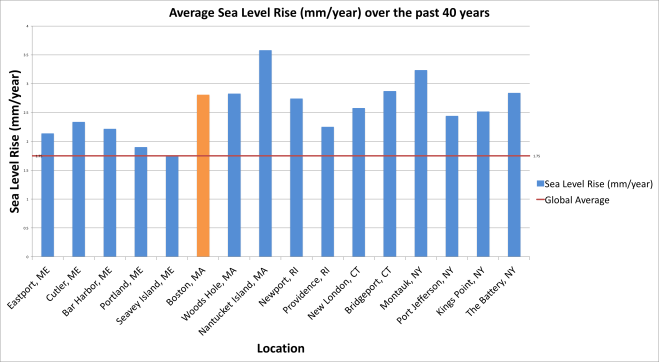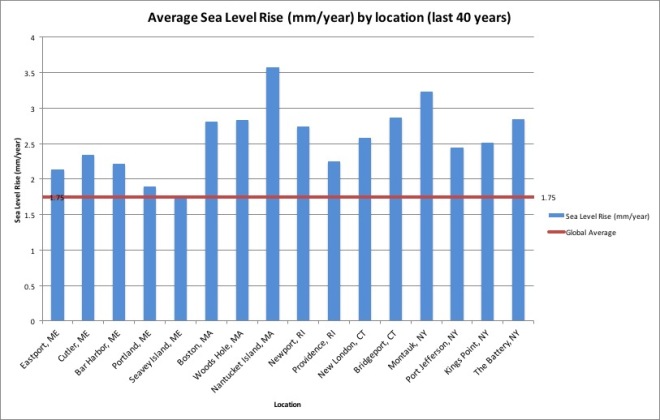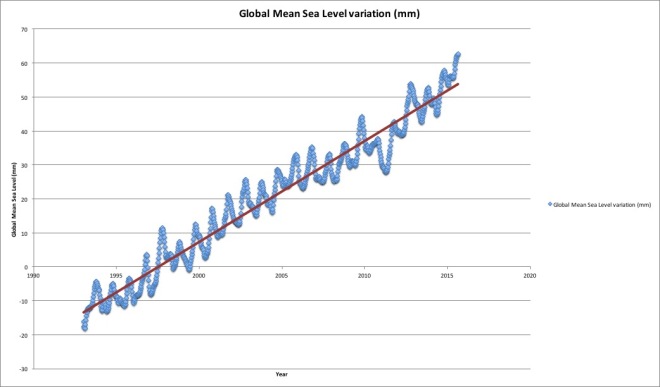By the end of the century, canals may replace many Boston streets and Boston University students could be swimming to class.
The ice caps are melting at rates faster than anyone had previously predicted. If this trend continues, global sea levels are estimated to increase by almost three feet by 2100, a level that would change the city of Boston dramatically.
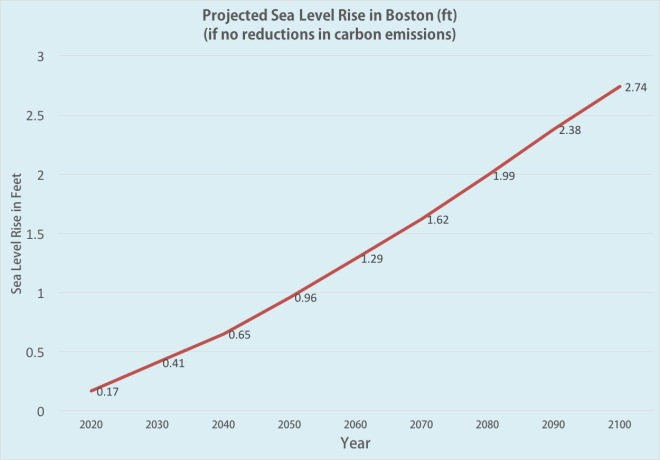
Areas such as Back Bay, Logan Airport, Boston Harbor and Charlestown would all be underwater by the end of the century with such a rise.
“We are looking at some number of millimeters of sea level rise in Boston,” said Amy Longsworth, the director of the Boston Green Ribbon Commission, which seeks to help implement Boston’s Climate Action Plan. “We are looking at more intense precipitation. And heat, more hot days, which is a concern for certain vulnerable populations.
Flooding is also a large concern for coastal cities like Boston. Rachel Eckles, a member of Divest BU, said that storm surges threaten areas like the bustling Commonwealth Avenue of BU, the river-hugging Esplanade and the beautiful Boston harbor.
A rising sea level, which has be continually increasing over the past two decades, is caused by two factors, said Robert Kauffmann, an Earth & Environment professor at BU, the melting of ice and the density of warmer water.
“So at Greenland there’s an ice sheet, Antarctica there’s an ice sheet,” Kaufmann said. “As that ice melts it raises sea level. But also the warming of oceans raises sea levels because warm water is less dense than cold water so it takes up more space.”
This rising sea level is not occurring at the same rate globally. Boston is experiencing an annual sea level increase of 2.81 mm, higher than the global average of 1.75mm every year, based on data from the National Oceanic and Atmospheric Administration.
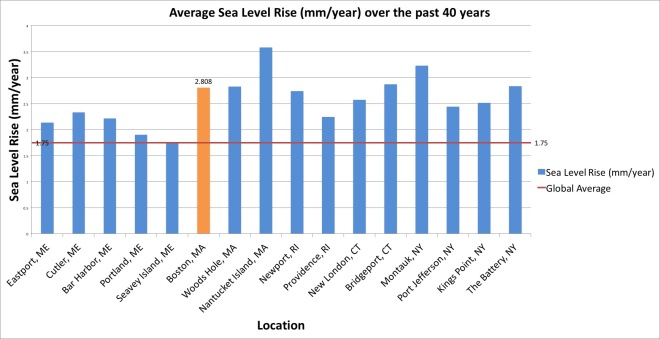
“People think of sea level as this universal, flat level,” said Kaufmann. “But that’s not true, the sea is not the same level all around the world. So the impact of sea level will vary among cities based on how much sea level rises in a given area. In some places, like Boston, the ground is actually rising due to ice melting.”
Discussions and movements have begun throughout Boston to tackle this issue. While some progress has been made around the city, many changes are still far away. A recent bill, which would prepare the city of Boston for flooding and sea level rise, recently failed to pass on Beacon Hill.
“There’s a lot happening and a number of things are under consideration,” said Longsworth. “Some buildings, like the Atlantic Wharf building, already have an Aquafence around them. So they can actually set up this little fence, which gives them an additional 2-3 feet [of protection].”
Many feel that the progress thus far has been inadequate given the severity of the predicted rise.
“There are some pretty serious things that the city of Boston needs to take into consideration if it hasn’t already, which is what is going to happen to the airport, what is going to happen to the significant portions of the city that are composed of landfill and what is going to happen to the people who are impacted,” Klinger said. “What’s the plan there? These are questions that we have to start addressing. They are not easy questions to address but the sooner we start talking about them the better.”
Organizations such as the Boston Harbor Association are attempting to start the climate change discussion now rather than later. The non-profit association was originally created to help clean up Boston Harbor and encourage people to use it. Recently, their efforts have shifted to addressing sea level rise and informing the public.
“Our relationship with the harbor is going to continue to change as sea level rise increases and climate change impacts intensify,” said Rebecca Hearst, the Climate Project Manager at the Boston Harbor Association. “We are focused on educating people on how climate change will change the format of our city and making sure the city of Boston and its residents are prepared for coastal flooding.”
Boston is beginning to address the issue. The city’s goal is to eventually establish areas that could be controllably flooded by surges, rather than create concrete structures such as walls and levees.
“[Boston’s] climate action plan is really focused in the long run on the goal of 80% carbon reduction over the year 2005 by the year 2050,” said Longsworth. “Boston is going to have to figure out how to do that. It will require the city doing something differently. It will require the state, which also has the same goals, to take more action.”
The Green Ribbon Commission, a group of 33 civic leaders from the private sector, is attempting to help Boston succeed in its climate goals by increasing efficiency and reducing emissions.
Student groups at schools in Boston are attempting to address these climate change questions as well, such as Divest BU, a student-led campaign to encourage the school to stop investing money in fossil fuel companies.
“By getting large institutions like BU and other universities and large churches to divest, it sends a message to society that our school does not want to support these industries,” said Eckles.
This connection between fossil fuel emissions and climate change is not new information. For decades, people have known about a global warming that was occurring, yet the issue has only continued to intensify.
“We could have done more earlier and now we’re digging ourselves deeper into the hole and need to do more drastic things,” said Eckles. “[Students] have a special position in this situation in that we will probably be the leaders fixing these problems.”
So what can be done to slow this process? While it looks to be impossible to reverse the changes that are already occurring due to climate change, their severity can be reduced by both individual and group efforts.
For Boston, Kaufmann suggested installing insulation and reducing heating as “most Bostonians use more energy and emit more carbon than driving their cars.”
In order for larger changes to be seen, though, people must band together and collectively fight climate change. If nothing significant is done, many areas of Boston will be underwater by the end of the 21st century.
“I think that to actually have an impact we need to have really big commitments and fundamental changes in how our energy system is set up and how infrastructure is built,” said Hearst. “I think once people are aware of how drastic it is and start educating themselves about all of the different things at play, they can start doing personal lifestyle changes but also advocating more broadly for the really big changes that are going to have to happen if we are going to be able to survive as a species. It’s not looking good.”
